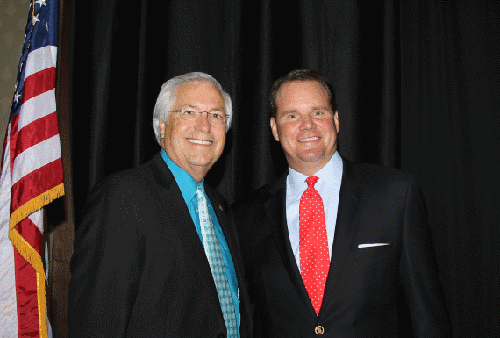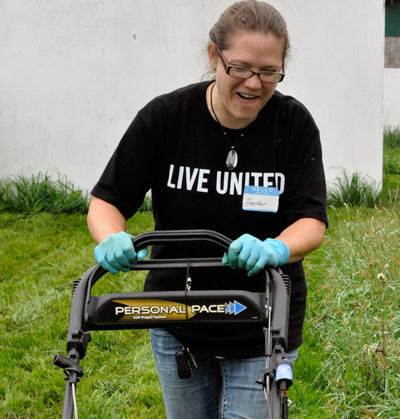Join us this evening at 6 p.m. at the Tulalip Hibulb Cultural Center, where Language teachers Michelle Myles and Natosha Gobin will share a presentation about Lizzie Krise, who was the first Tulalip elder to work with Linguist Tom Hess in the sixties to record the Lushootseed language. She told some short stories that many of our students and former students are familiar with, and there are some great stories that have come to us about things she did to help childen, both her own grandchildren and children, from the tribe.
Treasury Announces $12.4 Million in Assistance to Native Communities
Source: Community Development Financial Institutions Fund, United States Department of the Treasury, September 19, 2013
Washington, DC – Native American, Alaska Native, and Native Hawaiian communities (Native Communities) throughout the United States will receive much-needed economic and community development assistance as a result of the $12.4 million in Native American CDFI Assistance Program (NACA Program) awards announced today.
Thirty-five organizations serving Native Communities received awards from the U.S. Department of the Treasury’s Community Development Financial Institutions Fund (CDFI Fund) under the fiscal year (FY) 2013 round of the NACA Program. The awardees all aim to increase lending and financial services in Native Communities, stimulating economic development in some of the most distressed and low-income parts of the country.
“The Native American CDFI Assistance Program is providing critically needed funds for distressed Native and tribal areas, many of which lack traditional banking services,” said Don Graves, Treasury Deputy Assistant Secretary for Small Business, Community Development and Housing Policy. “This latest round of awards will expand the capacity of native financial institutions to develop innovative economic development solutions for the businesses and individuals in their communities.”
The awardees, all certified Native Community Development Financial Institutions (Native CDFIs) or organizations looking to become or create Native CDFIs, will receive a collective total of $12,451,015 in Financial Assistance and Technical Assistance awards. Eighteen Native CDFIs will receive Financial Assistance awards, which are primarily used for financing capital. Seventeen organizations will receive Technical Assistance grants, which are usually used to acquire products or services, staff training, professional services, or other support.
“The FY 2013 NACA Program awards will lead to increased loans for small businesses, affordable housing, and community facilities in Native Communities, in addition to basic financial services that are essential to building household wealth and stability,” said CDFI Fund Director Donna J. Gambrell. “As the award-making arm of the CDFI Fund’s Native Initiatives, the NACA Program has consistently supported the unique organizations that are doing such vital work in these communities.”
The majority of the target markets served by the awardees are rural, although seven organizations primarily serve minor urban areas. The organizations are headquartered in fifteen different states across the country. Full information about the FY 2013 NACA Program awardees can be found in the CDFI Fund’s Searchable Award Database at www.cdfifund.gov/awards.
The FY 2013 NACA Program Awards announcement comes at a time when the CDFI Fund’s Native Initiatives is in the middle of studying the current availability of access to capital and credit in Native Communities. The “Access to Capital and Credit in Native Communities” study will draw on focus groups, tribal consultations, and independent research to establish the current reality of capital and credit availability in Native areas. The results of the study will be used to inform the CDFI Fund’s future approach to the training, technical assistance, and awards that it provides through the Native Initiatives.
Learn more about the “Access to Capital and Credit in Native Communities” study at www.cdfifund.gov/nativestudy. Additional information about the FY 2013 round of the NACA Program, including key highlights and the full award list, can be found below and at www.cdfifund.gov/native.
2013 NACA Program Award Resources
Award Book: Learn key facts and statistics about the full group of awardees
Award List: Alphabetical by Organization
Award List: Alphabetical by State
Searchable Award Database: View the profiles of individual awardees
About the CDFI Fund
Since its creation in 1994, the CDFI Fund has awarded over $1.7 billion to CDFIs, community development organizations, and financial institutions through the CDFI Program, the Bank Enterprise Awards Program, the Capital Magnet Fund, the Financial Education and Counseling Pilot Program, and the Native American CDFI Assistance Program. In addition, the CDFI Fund has allocated $36.5 billion in tax credit authority to Community Development Entities through the New Markets Tax Credit Program. Learn more about the CDFI Fund and its programs at www.cdfifund.gov.
About the Native Initiatives
The CDFI Fund’s Native Initiatives work to increase access to credit, capital, and financial services in communities by creating and expanding CDFIs primarily serving Native Communities. This is achieved through two principle initiatives: 1) a funding program – the NACA Program – targeted to increasing the number and capacity of existing or new Native CDFIs, and 2) a complementary series of training programs that seek to foster the development of new Native CDFIs, strengthen the operational capacity of existing Native CDFIs, and guide Native CDFIs in the creation of important financial education and asset building programs for their communities. Learn more about the Native Initiatives at www.cdfifund.gov/native.
Congress Seeing Dollar Signs When Tribal Leaders Visit DC
By Rob Capriccioso, ICTMN
The week of September 9 was a big one for tribal visits to Washington, D.C.
There was a fancy shindig at Vice President Joe Biden’s house where Indian bigwigs including Jackie Johnson Pata, John Dossett, Terri Henry, Jodi Gillette and others celebrated the passage of the pro-tribal sovereignty Violence Against Women Act earlier this year. A meeting of the National Congress of American Indians (NCAI), focusing on the budget crisis, sequestration, and tax issues, saw dozens of tribal leaders express concerns. There were Indian health-focused meetings with the Department of Health and Human Services and the Office of Management and Budget. A Senate Committee on Indian Affairs hearing (sparsely attended by any senators) focused on water rights issues facing several tribes.
Tribal leaders used their time in Capital City to lobby federal officials for protection of the federal-tribal trust relationship, while trying to stave off budget cuts, enhance tribal sovereignty, and get more federal dollars flagged for reservation economic development.
Congress members, while sympathetic to the cause, couldn’t help but see dollar signs. Ever worried about winning the next election cycle, legislators from both sides of the aisle were quick to hit up tribal leaders for big bucks.
On the Republican side, Rep. Tom Cole (R-OK) hosted a breakfast for his good friend Rep. Mike Simpson (R-ID) September 12 at the exclusive Capitol Hill Club. The event was publicized and promoted by NCAI as part of its “Impact Days” meeting, and tribal leaders were encouraged to attend. Tickets ranged from $500 to $2,500. Organizer Shelly Roy has not responded to questions on how much money was raised, but the event was said to be well attended.
Cole told Indian Country Today Media Network that he was proud to host the breakfast, as he believes it is important for Indians to support Simpson. “Mike Simpson has been a real leader as chairman of the Interior appropriations subcommittee,” said the Chickasaw Nation citizen. “He deserves it.”
Democrats got in on the fundraising action in an even bigger way, with the Democratic Congressional Campaign Committee on September 13 hosting a tribal fundraiser coffee reception at the Democratic National Committee headquarters where tickets also ranged from $500 to $2,500.
Tribal leaders were asked to support the campaigns of Democrats Ron Barber (AZ), Ami Bera (CA), Julia Brownley (CA), Lois Capps (CA), Suzan DelBene (WA), Pete Gallego (TX), Joe Garcia (FL), Ann Kirkpatrick (AZ), Dan Maffei (NY), Patrick Murphy (FL), Bill Owens (NY), Scott Peters (CA), Raul Ruiz (CA), and Kyrsten Sinema (AZ). Organizer Mary Ryan Douglass did not respond to questions about how much money was raised in total.
Chris Stearns, a Navajo lawyer with Hobbs Straus and a Native-focused campaign organizer, said he is proud of Democrats for reaching out to tribal leaders, and he thinks the current situation in Congress reflects a growing level of tribal clout in the American political system.
“I think that…tribes have now demonstrated success at the local and state levels in a way that is very powerful and deep,” Stearns said. “You are seeing a trickle-up effect. In fact, many of the new members of Congress already have a good familiarity with tribes from their days in lower office. So, tribes still bring the money, but now they bring more political clout, ties, and collegiality.”
Tribes have also presented themselves as major financial players on the national level. Data from July 2012 shows that tribes by then had given approximately $4 million to President Barack Obama, Mitt Romney, and the Democratic and Republican Parties—not to mention localized and state-centric donations where tribes in Washington state alone have spent copy.1 million on political campaigns since the beginning of 2011.
Kalyn Free, a long-time Democratic Indian strategist and a Choctaw Nation citizen, also sees positives in the growing campaign finance outreach from Congress to tribes.
“As the fundraising increases, so does tribal influence with key lawmakers,” Free said. “We have made huge strides in a relatively short amount of time. As tribes become more comfortable in the political dialogue, it in turn raises the profile of issues critical to Native communities.”
Still, not all tribal leaders are convinced that these expensive fundraising festivities are worth it.
“Our so-called friends in Congress are not always willing to go to bat to take lumps for us,” said Ed Thomas, president of the Central Council of Tlingit and Haida Indian Tribe, as he lamented the current national budget situation and cuts to tribal programs at the same time tribes are being asked for major financial donations.
“I expect our friends to do something bold for us,” Thomas said. “If we are going to support them, we have to see results.”
Read more at http://indiancountrytodaymedianetwork.com/2013/09/18/congress-seeing-dollar-signs-when-tribal-leaders-visit-dc-151339
That Big Pumpkin in the Sky: Harvest Moon Really Shines This Week

NASA/YouTube
The harvest moon is giant and red upon the horizon because it rises at sunset.
Source: Indian Country Today Media Network
The harvest moon is still upon us, as the fall equinox approaches this weekend.
The fullest moon of the month fell on the night of September 18-19, but as NASA points out in this video, the moon is in the midst of a string of days during which it rises at sunset. And when that happens, the horizon-moon illusion combines with the sunset colors to redden it.
“When you add these effects together the Harvest Moon often looks like a great pumpkin,” NASA says. “The experience is repeated for several nights in a row around the equinox.”
So check the horizon tonight for a giant pumpkin. The fall equinox arrives on Sunday September 22.
Read more at http://indiancountrytodaymedianetwork.com/2013/09/19/harvest-moon-shines-and-week-151351
Native Youth Among Seven Killed in Raging Colorado Floodwaters

Brennan Linsley/Associated Press
The raging floodwaters of Boulder Creek, at the base of Boulder Canyon, on Friday September 13.
Source: Indian Country Today Media Network
The death toll rose to seven in the floods ravaging Colorado, among the victims American Indian Wesley Quinlan, and his girlfriend, Wiyanna Nelson, both 19.
The two were swept away by raging floodwaters on Wednesday September 11 as they tried to make it home along with two other friends, who survived. Just a week earlier the pair had vacationed with Quinlan’s mother, Glenda Aretxuloeta, to celebrate her birthday and meet her Native family members, the Denver Post reported.
“He was very, very connected to my Native American heritage,” Aretxuloeta told the newspaper, which did not give a tribal name.
As many as seven people have died in the massive floods that have been inundating Colorado since last Wednesday, including two women who are missing and presumed dead.
Boulder and Longmont, Colorado, continued to be inundated in floodwaters on September 16 as bad weather and heavy clouds grounded National Guard helicopters; more than 1,000 people awaited evacuation, and 1,000 or more were still unaccounted for, cut off because of ravaged infrastructure.
At least four people are confirmed dead, CNN reported, and two more are presumed to have perished in the raging floodwaters. Fox News said as many as seven had died.
On Saturday September 14 President Barack Obama declared Colorado a disaster area, and the Federal Emergency Management Administration (FEMA) said it was continuing to monitor the situation.
Besides the 19-year-old couple, two other victims were discovered in a roadway and a collapsed home, CNN said, while the two people presumed dead are two women, one 60 and the other 80.
With helicopters grounded, rescue crews were working on the ground only. But even they faced obstacles, with Colorado National Guardsmen among 51 people who had to be rescued on Sunday, along with first responders and civilians, when their own tactical trucks were stranded by rising floodwaters in Lyons, Colorado, Fox News said. Fifteen remained stranded after air rescues were suspended, the Colorado National Guard said in a statement.
“Mother Nature is not cooperating with us today, and currently we are not flying,” National Guard incident commander Shane Del Grosso told reporters, according to CNN. “But tomorrow if we get that window of opportunity, which is sounds like we might get, we have the horsepower to hit it hard.”
The toll is high financially as well, with Boulder County looking at a copy50 million repair bill that is 10 to 15 times its annual budget, the county’s transportation director, George Gerstle, told CNN. That’s to repair up to 150 miles of roads and as many as 30 bridges.
Besides the devastation and tragedy, the floods are troubling because they did not come from routine sources, National Geographic reported. Normally they come about from spring rains, or intense summer thunderstorms that dump voluminous rain in concentrated areas, NatGeo.com said. This was different. In just a few days, 15 or more inches of rain—more than the record high for an entire month—had fallen in the Boulder area, said Brad Udall, director of the University of Colorado, Boulder’s Getches-Wilkinson Center for Natural Resources, Energy and the Environment, to NatGeo.com.
“This was a totally new type of event,” he said, “an early fall widespread event during one of the driest months of the year.”
It may be yet another symptom of climate change, NatGeo.com noted. The drought that has gripped the Colorado River Basin for 14 years has hardened the soil, and wildfires have stripped vegetation. This leaves no place for water to go, and no fauna to halt its progress, both of which can create conditions for devastating flooding.
The Navajo Nation is currently contending with a similar situation related to drought, as parts of the reservation are recovering from flooding that also occurred last week.
RELATED: Flash Flooding on Navajo Nation Displaces Scores, Wrecks Homes With Mold and Mud
Moreover, these dynamics feed into and exacerbate one another as wildfires become more frequent on a warming planet, creating more flood-prone land, NatGeo.com said.
RELATED: Mother Earth Burning: Climate Change Will Increase Wildfire Frequency, Researchers Say
Connecting the Dots: How Climate Change Is Fueling Western Wildfires
Read more at http://indiancountrytodaymedianetwork.com/2013/09/16/native-youth-among-seven-killed-raging-colorado-floodwaters-151307
Cherokee Nation Provides $1.3 Billion Impact on Oklahoma Economy

Source: Native News Network
TULSA, OKLAHOMA – Touting the phrase “A strong Cherokee Nation means a strong Oklahoma,” the Cherokee Nation announced on Tuesday the Tribe provides a $1.3 billion economic impact to the state of Oklahoma’s economy.
Tribal officials announced its impact Tuesday during a luncheon with several state, county and local officials at its entertainment flagship property, Hard Rock Hotel & Casino Tulsa.
The research study shows, with the $1.3 billion economic impact, the tribe’s activities directly and indirectly support more than 14,000 jobs and provide more than $559 million in income payments.
“The Cherokee Nation is stronger than ever and, as a result, so is the state of Oklahoma,”
said Cherokee Nation Principal Chief Bill John Baker.
“What is good for the Cherokee Nation is good for everyone in our state. From the number of jobs we provide to the services we administer to the local vendors we put to work, the Cherokee Nation positively impacts the lives of so many Oklahomans. And we’re not going anywhere. Essentially, the Cherokee Nation is a corporate headquarters that will never leave town.”
Since 2010 study, the Tribe has increased its direct economic output to more than $1 billion, which is a 25 percent growth. Cherokee Nation’s direct pay to employees has increased by more than $120 million, resulting in more than $375 million in income payments to its workers. During the same period, direct employment grew by nearly 250, reaching 9,244 employees, including contract workers.
“Cherokee Nation government and business operations continue to offer expanded economic opportunities in northeast Oklahoma,”
said Dr. Russell Evans, executive director of the Steven C. Agee Economic Research and Policy Institute, who authored the report assessing the Cherokee Nation’s economic impact on northeast Oklahoma.
“The tribe’s operations are a critical source of economic strength for the region.”
With its capital in Tahlequah, Oklahoma, the Cherokee Nation provides an array of government services, spurs economic development and provides financial support to the entire region.
Cherokee Nation works alongside county, state and local governments to improve roads and bridges, provide much needed funding to rural schools, ensure communities have good, clean running water and improve access to health care.
Cherokee Nation’s economic development engine, Cherokee Nation Businesses, reported record revenues of more than $715 million during fiscal year 2012. Along with supporting vital government services, the Cherokee Nation reinvests its business profits to create more Oklahoma jobs and further diversify its non-gaming businesses.
Beyond its direct investments, Cherokee Nation supports a number of local, diverse and growing industries that help drive private and public sector partnerships. The tribe assists with child care, career training and development, elder services and contract health. These services, as well as other services, are often met through the private sector and funded by the Cherokee Nation. This impact also comes in the form of goods or services purchased for Cherokee Nation economic activities.
For example, the tribe recently announced a $100 million investment in its tribal health care system, which supports more than a million patient visits each year. This type of activity spurs purchases and subcontracting to many privately owned small businesses throughout the tribe’s jurisdiction.
“It’s very eye opening to people when they begin to understand all the Cherokee Nation does for our state and, specifically, the northeast region,”
Baker said.
“We are extremely proud to support more than 14,000 employees and countless small businesses. As a lifelong small business owner myself, I know how important a strong local economy is and what it means to the people who live here.”
The report was commissioned by the Cherokee Nation and produced by Evans. He and his research team at the Steven C. Agee Economic Research and Policy Institute in the Meinders School of Business at Oklahoma carefully collected and reviewed data to paint an accurate picture of the Cherokee Nation’s impact on the state of Oklahoma.
Google strikes energy deal with Native American firm
Google strikes deal with a small, Native American-owned firm called Chermac Energy, which is developing the Happy Hereford wind farm outside Amarillo, Texas.
Source: USA Today
Google needs a lot of energy to keep its data centers humming around the world. That can get dirty, environmentally, so the the world’s largest Internet search company is trying to get its power from renewable sources.
The latest effort, announced Tuesday, is a deal with a small, Native American-owned firm called Chermac Energy, which is developing the Happy Hereford wind farm outside Amarillo, Texas.
Google said it agreed to buy the entire 240 megawatt output of the wind farm, which is expected to start producing energy in late 2014.
This is Google’s fifth long-term energy agreement like this and its largest so far. The company has contracts for more than 570 megawatts of wind energy – enough to power about 170,000 houses, it noted.
Google can’t use this energy directly in its data centers, but the company gets credit for the renewable energy and sells it to the wholesale market. That’s a contrast to some other parts of the world. In Sweden, Google said it can buy wind energy and use it in its Hamina, Finland data center.
Data centers use a lot of energy, so sourcing power efficiently gives technology companies an edge. In early 2010, Google got a license to trade energy on the wholesale market, which allows the company to buy in bulk, a useful advantage.
Hundreds turn out for Days of Caring

— image credit: Lauren Salcedo
By Lauren Salcedo, The Marysville Globe
MARYSVILLE — More than 800 volunteers spent their weekends painting fences, cleaning schools, picking up litter and more as part of United Way of Snohomish County’s 20th annual Days of Caring efforts on Sept. 13 and Sept. 14.
In the Marysville and Tulalip areas, volunteers from across Snohomish County visited the Tulalip Boys & Girls Club, All-Breed Equine Rez-Q and Pinewood Elementary to give back to their community by spending two days taking care of much-needed maintenance.
“We found out two weeks ago that we had been chosen for this day of service,” said Dale Squeglia, director of the All-Breed Equine Rez-Q in Tulalip. “It was a surprise. A very nice surprise. United Way is here mowing the lawn, weed-whacking and painting everything. It’s just amazing.”
The All-Breed Equine Rez-Q is a nonprofit that rescues horses from abusive or neglectful situations, and either keeps them on their property to live out their days or looks for appropriate places to re-home them. On Friday, Sept. 13, employees of Crane Aerospace in Lynnwood helped complete yard work, and prepared the rescue’s fences and barns for painting on Saturday, Sept. 14, by Snohomish County Public Utility District employees.
“United Way is already a supporter of us financially and helps us out,” said Squeglia. “This is the first time we’ve had them actually come out and physically help us, so we are very excited.”
Volunteer Sharon Peck was responsible for filling out the application to participate in the Days of Caring.
“We have two armies of people coming out to work all day, both days,” said Peck. “It’s a wonderful opportunity for the people of the community to become aware of our needs, and also to have someone do the work that we don’t have the volunteers to do on a regular basis, and they get to spend a day working outside. Our project was called ‘Four Legs and Two Big Brown Eyes: Helping Snohomish County Horses.’ Nobody could resist that.”
At Pinewood Elementary, representatives from Union Bank and the The Daily Herald newspaper volunteered to sweep the grounds, clean-up flower beds and gardens, pressure-wash playground equipment and pick up litter.
“We all know funds are being cut, and so we are here helping the kids,” said Tiffany Lock-Osterberg of Union Bank, who noted that her company participated in the Days of Caring at Pinewood last year. “We painted the hopscotch areas, helped clean up graffiti and painted a mural. Last year, the kids came out and said, ‘Thank you,’ and even helped out. They did that again this year and that’s really great to see.”
Marysville mayor Jon Nehring visited Pinewood Elementary on Friday, Sept. 13, along with United Way of Snohomish County Vice President Karen Crowley.
“A big part of Marysville is the volunteers,” said Nehring. “As mayor, that means a lot to me, especially to see them out here helping our schools. As a campaign chair for United Way, this is a great way to show what United Way is all about. I don’t think there is any other day of the year that is like this. There are 800 volunteers out in Snohomish County right now. It’s truly amazing to see all the work they are doing.”
Crowley said that the volunteer efforts at Pinewood Elementary specifically helped improve morale at the school.
“We had three companies volunteer here last year, and Union Bank was one of them so it is great to see them back again,” said Crowley. “What touched us is that it seemed that they felt they hadn’t been paid attention to. Last year, students put signs together saying, ‘Thank you,’ and you got a sense of real appreciation from them. There was a mural painted with kids and volunteers, and I remember chatting with a mom who was in tears and she said, ‘We thought our kids were forgotten.’ It was really powerful.”
In Snohomish County, 73 teams participated in 41 projects benefiting 30 different agencies as a part of the annual Days of Caring.
“That’s a total of 3,746 hours, which at the standard economic value for volunteer time — $22.69 per hour — would come up to $85,000,” said Neil Parekh, vice president of marketing and communications for United Way of Snohomish County.
For more information on United Way, and volunteer opportunities in Snohomish County, visit www.uwsc.org.
Plenty of opportunities for local anglers
By Wayne Kruse, The Herald
If you’re a sport fisherman, these are the good ol’ days. A record number of fall chinook are wending their way up the Columbia, providing catches of one to two chinook per rod at the mouths of the Cowlitz and Lewis rivers the past several weeks. Some 900,000 coho are due in Puget Sound, and are taking up the slack left by a big pink run. So many razor clams are available on the ocean beaches that state officials have decided to start the fall digging season early.
And on and on. If you don’t want to get bit by a fish, stay away from the water.
State Department of Fish and Wildlife biologist Joe Hymer, at the agency’s Vancouver office, said last week marked the largest fall chinook count (and still counting) since Bonneville Dam was built in 1938. The old record was a run of 611,000 fish in 2003, and this one is predicted to be somewhere in the 800,000-fish range.
Many of these big kings are “upriver brights,” headed for the Hanford Reach, and should be the basis for a gunnysack fall fishery in the area of the Vernita Bridge, upriver from the Tri-Cities.
Creel checks on the Reach last week showed 762 boat anglers with 244 adult and 132 jack chinook, but that success rate will improve rapidly.
Farther downriver, below the mouth of the Lewis, anglers made 5,654 trips on Sept. 6, 7 and 8, and nailed 5,351 kings for a success rate of 0.95 fish per rod. That’s unheard-of fishing on the lower Columbia.
On the local front, the annual derby for the blind was held Monday, and results bode well for this weekend’s big Everett Coho Derby. Jim Brauch, avid angler and an Everett Steelhead and Salmon Club member, hosted a derby participant Monday and limited out in Brown’s Bay on silvers of 5 to 8 pounds. He said 55 feet was the magic depth, and an Ace High fly the top lure.
“Other fish were caught throughout the system,” Brauch said. “The big fish contest was won by a nice 15-plus-pounder from the east side of Possession. (There’s) lots of fish from Mukilteo to the shipwreck and on the west side of Possession. I don’t know how many fish were caught, but all blind participants had at least one fish and most had more than one.”
Brauch said he also talked to anglers at Douglas Bar on the Snohomish River on Sunday. They reported coho as far up as the Highway 522 bridge.
Mike Chamberlain at Ted’s Sport Center in Lynnwood said there seems to be good numbers of silvers in the area, and that the derby should draw well. He said the fish are moving, not schooled up particularly, and that fishermen should cover a lot of water.
“Coho are where you find them, and hanging around all the rest of the boats can be counter-productive,” he said.
Chamberlain likes the Grand Slam Bucktail in green, and the Ace High fly in either chartreuse or green spatterback, or purple haze, behind a green or white glow flasher. The “Mountain Dew” series of Hot Spot flashers also are fish catchers, he said. Rig the flies 32 or 36 inches behind the flasher, and add a small herring strip.
There will be two free fishing seminars prior to the Everett Derby. The first is tonight — from 6:30 to 7:30 p.m. — at the Tulalip Cabela’s Conference Center, where Ryan Bigley of Soundbite Sportfishing will share tips and tactics for advanced coho fishing in Puget Sound. Space is limited; RSVP by calling 360-474-4880.
The second seminar is scheduled for 7 p.m. Friday and features John Martinis of John’s Sporting Goods in Everett, with everything you need to know to fish the coho derby. The venue is Everett Bayside Marine. For more information, call Bayside at 425-252-3088.
In a first for this area, the Sportsman Channel and Comcast are teaming up with the Everett Derby to donate fish caught by participating anglers to help those less fortunate. The event is part of the Sportsman Channel’s Hunt.Fish.Feed. outreach program that taps an underutilized food source of game meat and fish donated by sportsmen to feed those struggling with hunger across the country.
Participating anglers from the Everett derby are expected to donate more than 1,000 pounds of fresh fish to the Volunteers of America food bank in north Everett.
Lots of clams
State shellfish managers are practically begging diggers to take razor clams off their hands, as the fall season arrives.
“We have a huge number of clams available for harvest this season, paricularly at Twin Harbors,” said Dan Ayres, the state’s coastal razor clam honcho. “There are only so many good clamming tides during the year, and we decided there was no time to waste in getting started.”
Ayres said that while the fall digging schedule is still being developed, managers saw no reason to delay a dig at Twin Harbors.
So Twin Harbors is open tonight through Monday. Tides are as follows: Today, minus 0.3 feet at 7:13 p.m.; Friday, minus 0.5 feet at 7:57 p.m.; Saturday, minus 0.5 feet at 8:39 p.m.; Sunday, minus 0.3 feet at 9:21 p.m.; and Monday, 0.0 feet at 10.04 p.m.
Ayres said estimates of coastal razor clam populations indicate some 800,000 more clams available for harvest this year than last. And last year saw 420,000 digger trips harvesting 6.1 million clams, for an average of just under the per-person limit of 15 per day.
And if 2013 is going to be better than that, it’ll likely get wild down there in the dunes.
For more outdoor news, read Wayne Kruse’s blog at www.heraldnet.com/huntingandfishing.
Muckleshoot Indian Tribe makes $25,000 gift for UPS scholarships
By Shirley Skeel, The Suburban Times
TACOMA – University of Puget Sound is pleased to announce a $25,000 gift from the Muckleshoot Indian Tribe that will help provide scholarships for Native American students pursuing their education at the national liberal arts college.
This is the first grant to Puget Sound by the Muckleshoot Indian Tribe, which shares the college’s ambition to provide young people with broad access to a quality education that serves as a foundation for a successful career. The $25,000 gift will be allocated in scholarships to eligible Native American students attending Puget Sound.
“Young Native Americans in Washington have bold aspirations, but not always the family resources to ensure they can follow the paths they choose,” said Virginia Cross, chair of the Muckleshoot Indian Tribe. “We hope to encourage more of them to commit to a high-standard college education so they can enter civic and business life in positions that will be a boon to their community and serve as a model for other young people.”
Puget Sound has attracted a rising percentage of students from diverse backgrounds for the past two decades. More than 20 percent of freshmen students in 2012 identified as being from groups traditionally underrepresented in higher education. In the 2012–13 school year, 55 Native American students attended Puget Sound.
To ensure that students can devote themselves to their studies, as well as take advantage of opportunities to participate in campus clubs, community work, and athletic and academic activities, Puget Sound currently offers financial aid to 94 percent of its students. Providing financial support for students is also a key target of the college’s current One [of a Kind] comprehensive campaign.
The Muckleshoot Indian Tribe places priority in awarding grants to organizations that address the unique local and regional issues faced by Native Americans. Awards range across areas including education, health, culture, arts, the environment, community advocacy, and communities of color.










